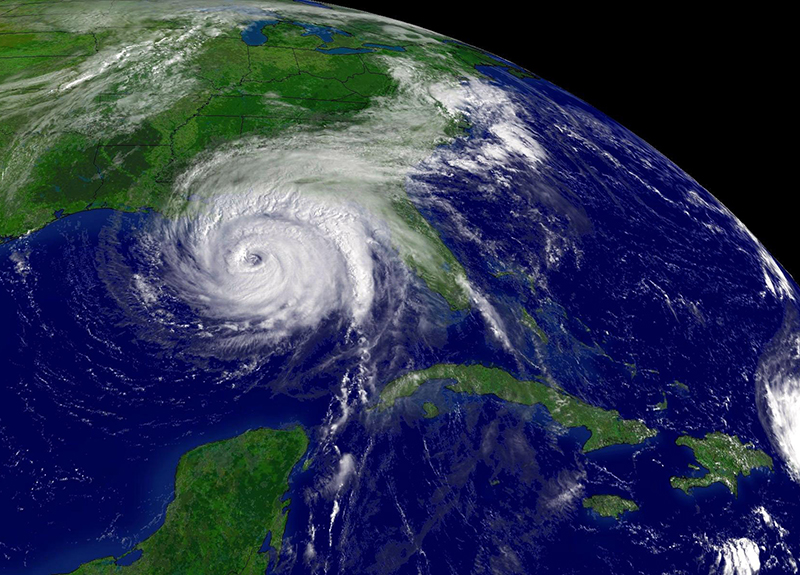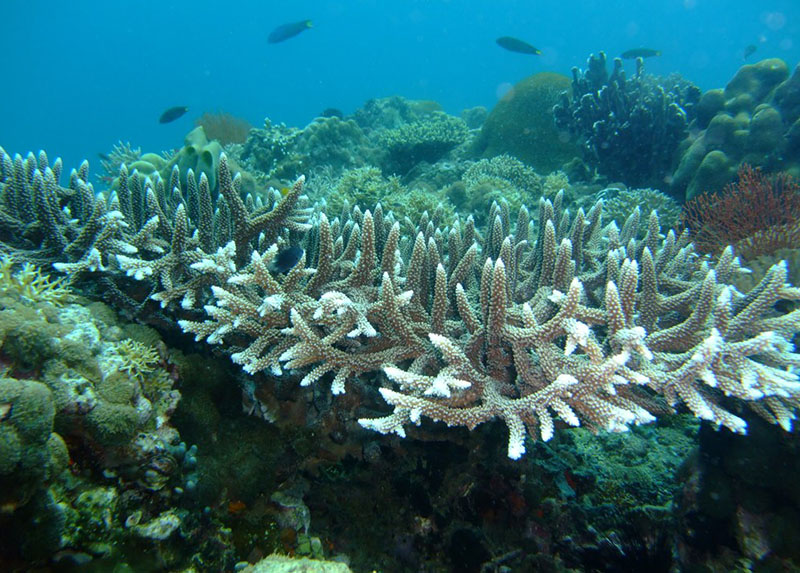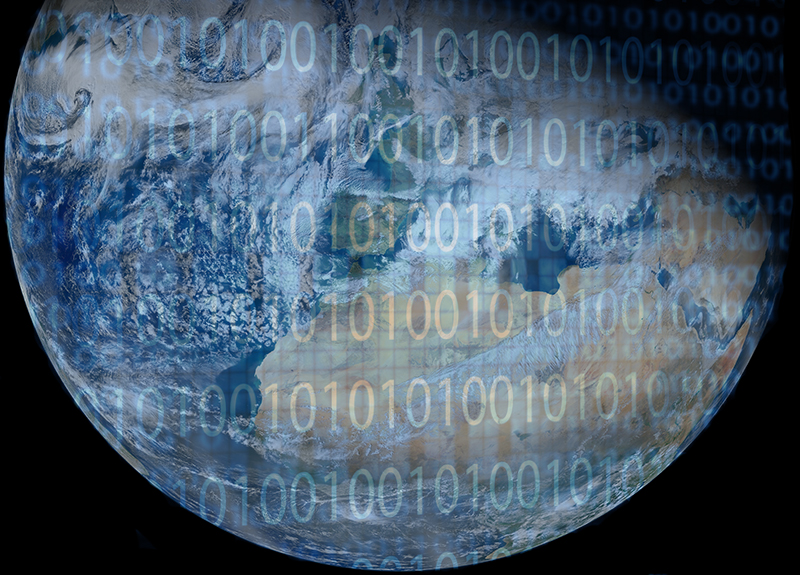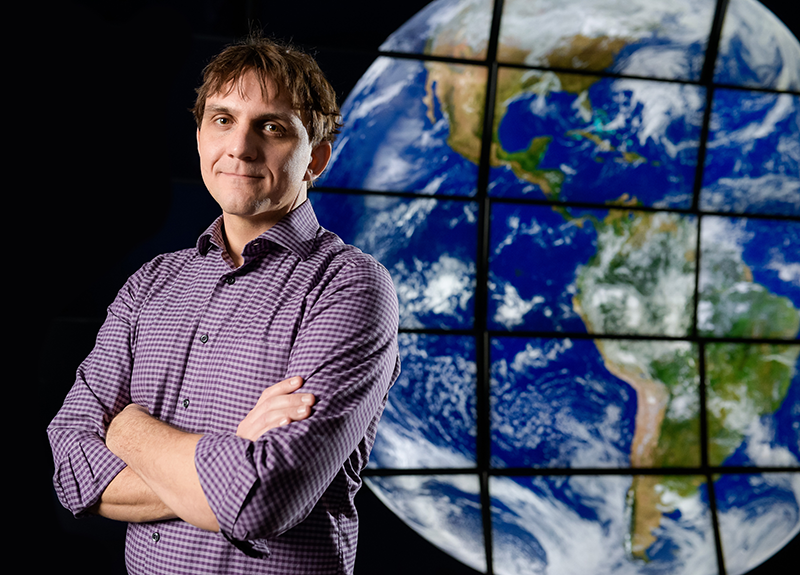While climate scientists agree that human-caused climate change is influencing weather, they have often been hesitant to draw direct linkages between this phenomenon and specific extreme weather events. The reason? When studying a particular event such as a superstorm or severe heat wave, it can be challenging to tease apart human influence from the natural variability of the weather. But that’s changing.
In a new study, published in the journal Proceedings of the National Academy of Sciences, Stanford professor of Earth system science Noah Diffenbaugh and a team of colleagues outline a four-step framework for testing whether global warming has contributed to particular weather events. The collaborative effort involves researchers from several universities including Northwestern and is the latest in the growing field of “event attribution analysis,” which combines statistical analyses of climate observations with increasingly powerful computer models to study the influence of climate change on individual extreme weather events.
“Over the past decade, there’s been an explosion of research, to the point that we are seeing results released within a few weeks of a major event,” says Diffenbaugh.
By leveraging observations and a large climate model ensemble, the researchers quantify uncertainty in the influence of global warming on the severity and probability of the historically hottest month, hottest day, driest year, and wettest period for different areas of the globe.
Daniel Horton, a climate scientist and assistant professor in Northwestern’s Department of Earth and Planetary Sciences and former postdoc in Diffenbaugh’s lab at Stanford, is a co-author on the paper.
“This paper presents a methodology that allows us to answer the frequently received question: ‘Was this particular extreme event caused by, made more likely by, or made worse by climate change?’” says Horton. “We use this method to quantify the contribution of historical global warming to unprecedented climate extremes in the available observational record across the globe.”
“We find that over 80 percent of the observed areas of the globe have seen an increased risk for both the occurrence and severity of heat extremes. We also find that over 50 percent of the observed area of Earth has seen an increased risk of both wet and dry extremes.” — Daniel Horton, Northwestern Assistant Professor of Earth and Planetary Sciences
In the paper, entitled “Quantifying the influence of global warming on unprecedented extreme climate events,” the researchers present robust evidence that humans have contributed to the severity and probability of individual extreme high-impact events. The fact that historical events have been made worse by humans indicates that the continued burning of fossil fuels is likely to exacerbate the problem.
Methodology and Results
In order to avoid inappropriately attributing an event to climate change, the authors began with the assumption that global warming had played no role, and then used statistical analyses to test whether that assumption was valid.
“Our approach is very conservative,” Diffenbaugh says. “It’s like the presumption of innocence in our legal system: the default is that the weather event was just bad luck, and a really high burden of proof is required to assign blame to global warming.”
In addition to allowing the research team to analyze extreme temperature and precipitation events, their framework also allows them to examine the physical ingredients that help to create extreme climate events.
“We find that over 80 percent of the observed areas of the globe have seen an increased risk for both the occurrence and severity of heat extremes,” Horton says. “We also find that over 50 percent of the observed area of Earth has seen an increased risk of both wet and dry extremes.”
In its analysis, the researchers examined Arctic sea ice, which has declined by around 40 percent during the summer season over the past three decades. When the team applied their framework to the record-low Arctic sea ice cover observed in September 2012, they found overwhelming statistical evidence that global warming contributed to the severity and probability of the 2012 sea ice measurements.
“The trend in the Arctic has been really steep, and our results show that it would have been extremely unlikely to achieve the record-low sea ice extent without global warming,” Diffenbaugh says.
Horton, whose research at Northwestern focuses on atmospheric circulation, notes that the framework yielded interesting results when applied to a heat wave that occurred in Russia in 2010.
“We found that the atmospheric pressure pattern that occurred over Russia during the 2010 heat wave has become more likely in recent decades, and that [human-caused] global warming has contributed to those odds. If the odds of an individual ingredient are changing—like the pressure patterns that lead to heat waves—that puts a thumb on the scales for the extreme event.”
Such extremes can have substantial impacts on public health, built infrastructure, agricultural productivity, and ecosystems around the world. Quantifying the human component and contribution to these impacts is important for informing decisions about managing the risks of a changing climate. The new study will help to inform everything from farming to insurance premiums, to international supply chains, to infrastructure planning, says Diffenbaugh.
“When you look at the historical data, there’s no question that global warming is happening and that extremes are increasing in many areas of the world,” he says. “People make a lot of decisions – short term and long term – that depend on the weather, so it makes sense that they want to know whether global warming is making record-breaking events more likely. As scientists, we want to make sure that they have accurate, objective, transparent information to work with when they make those decisions.”
***
Similar research at Northwestern will be organized under the auspices of the new $5.5 million Ubben Program for Climate and Carbon Science at the Institute for Sustainability and Energy at Northwestern (ISEN).
Other authors on the study include Danielle Touma, Allison Charland, Yunjie Liu and Bala Rajaratnam of Stanford University, and Stanford alumni Deepti Singh and Justin Mankin (now at the Lamont-Doherty Earth Observatory of Columbia University), Daniel Swain and Michael Tsiang (now at the University of California, Los Angeles) and Matz Haugen (now at the University of Chicago). Funding was provided by the U.S. National Science Foundation, the Department of Energy, the National Institutes of Health and Stanford University.
Article written in collaboration with Ker Than, Science Writer and Associate Director of Communications, at Stanford’s School of Earth, Energy & Environmental Sciences.
Media Contacts:
Mike M. McMahon, Institute for Sustainability and Energy at Northwestern (ISEN): (847) 467-1361, mike.mcmahon@northwestern.edu
Ker Than, Stanford School of Earth, Energy & Environmental Sciences: (650) 723-9820, kerthan@stanford.edu
Photo credit: NASA/NOAA







